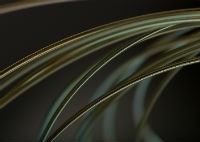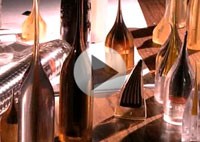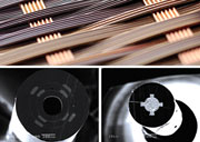Professor Yoel Fink
Microfluidic directional emission control of an azimuthally polarized radial fibre laser
Lasers with cylindrically symmetric polarization states are predominantly based on whispering-gallery mode, characterized by high angular momentum and dominated by azimuthal emission.
Spinning new materials in a thread
Researchers at MIT have succeeded in making a fine thread that functions as a diode, a device at the heart of modern electronics. This feat — made possible by a new approach to a type of fiber manufacturing known as fiber drawing — could open up possibilities for fabricating a wide variety of electronic and photonic devices within composite fibers, using a variety of materials.
Innovation Nation: Smart Fibers
Featured video of the day for Science 360 provided by the National Science Foundation (NSF.)
New forms of advanced optical fibres featuring exotic glasses, carefully designed microstructures and cores that are either hollow, fluidic, semiconductor or piezoelectric are giving light guides a new lease of life, reports Duncan Graham-Rowe.





